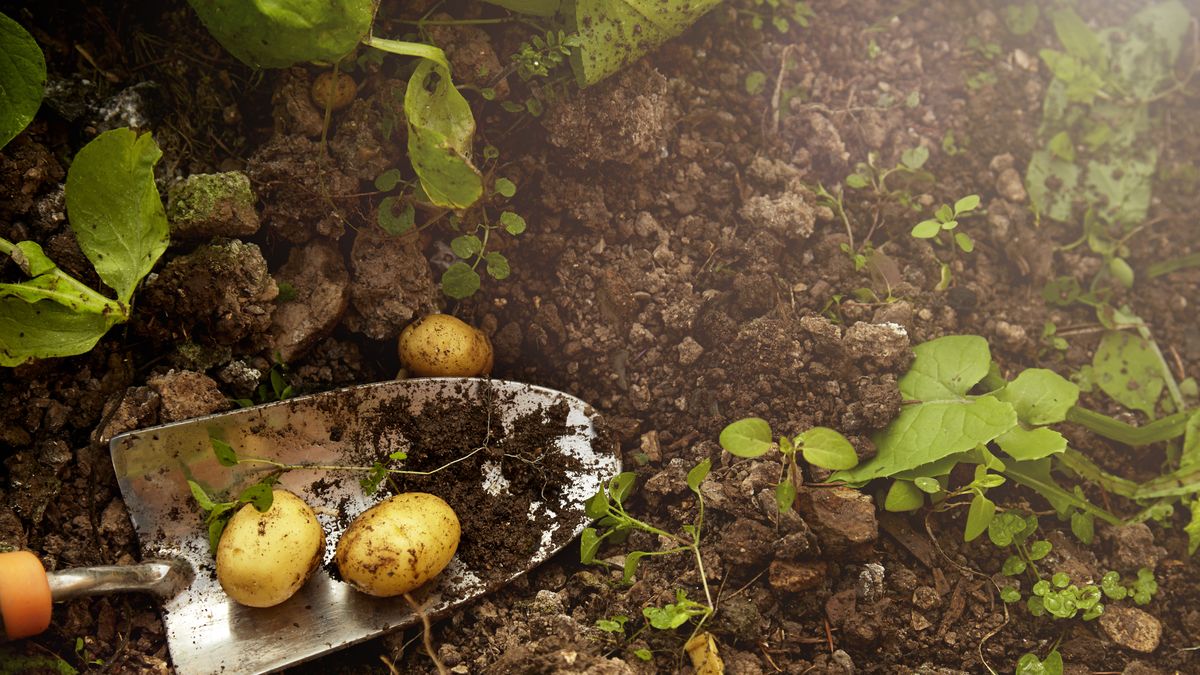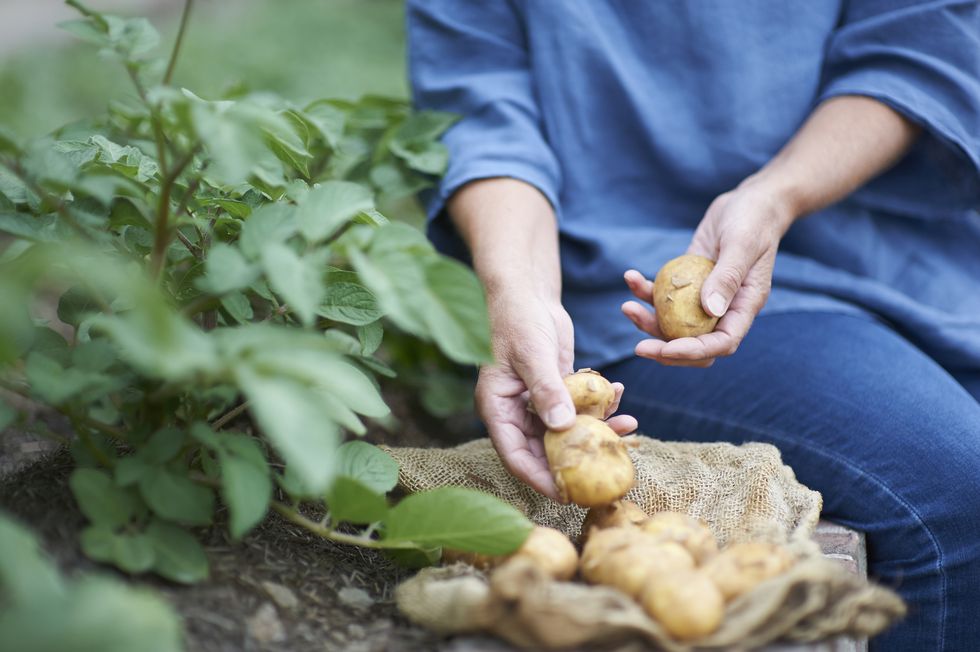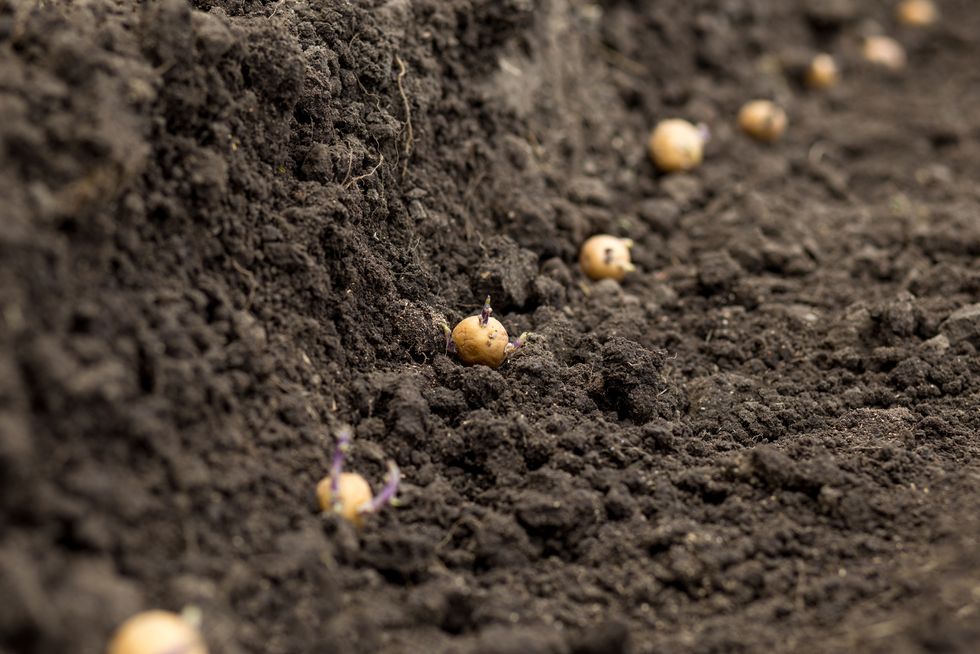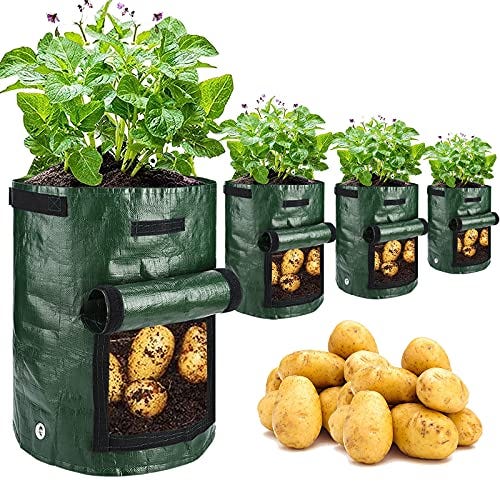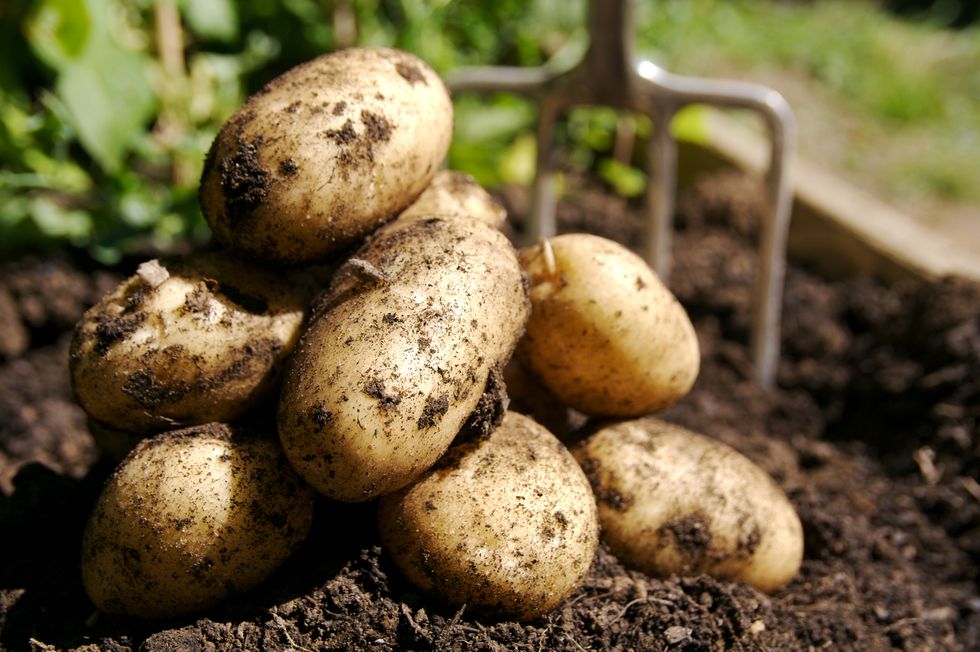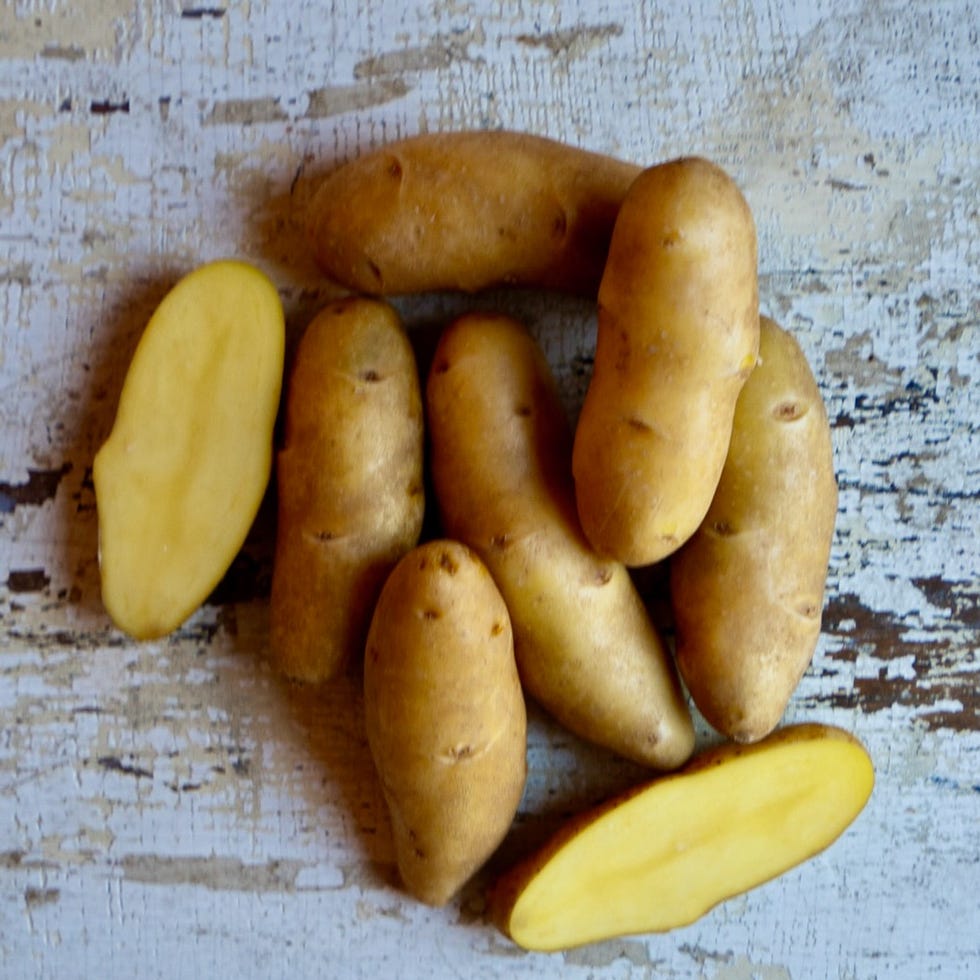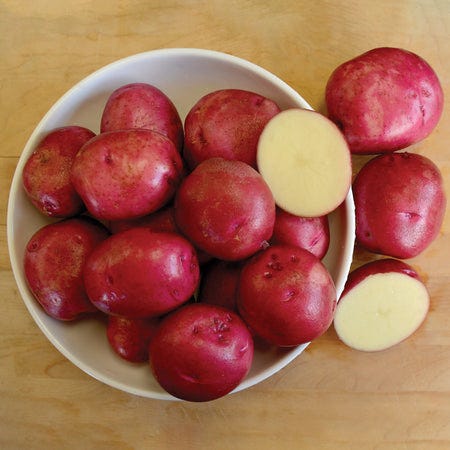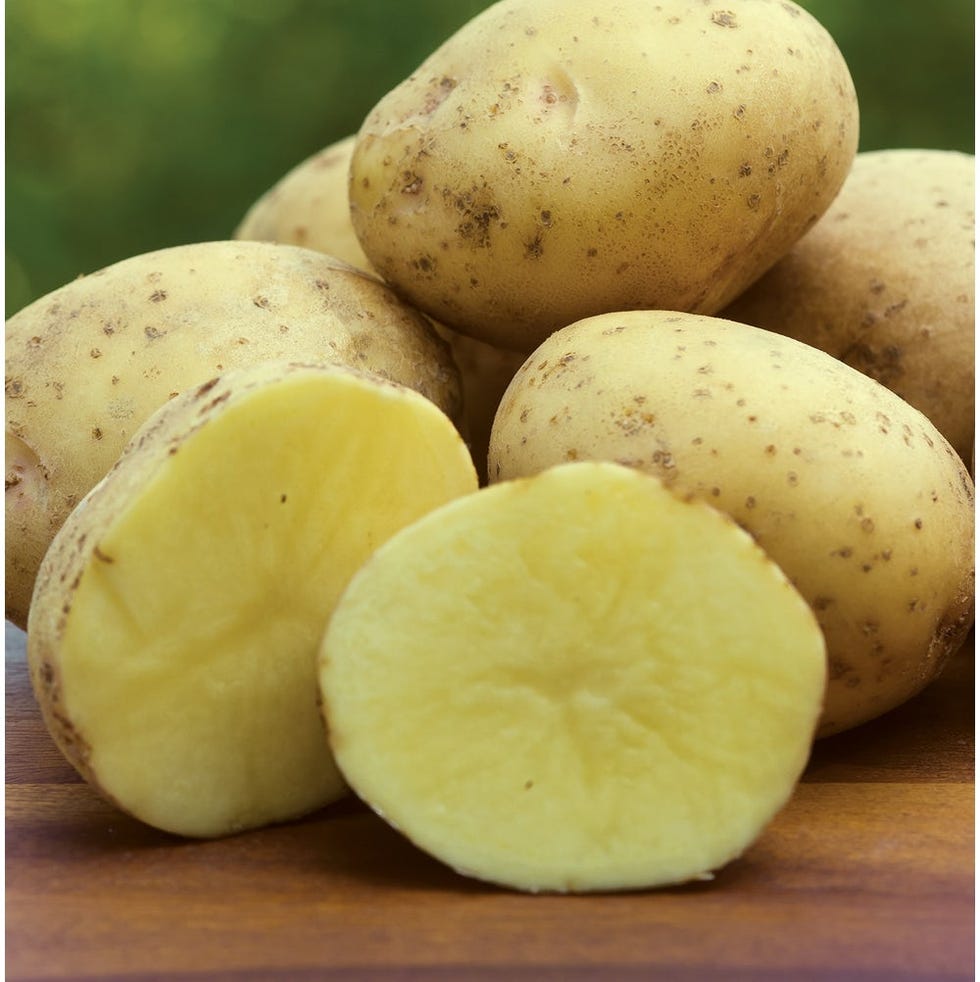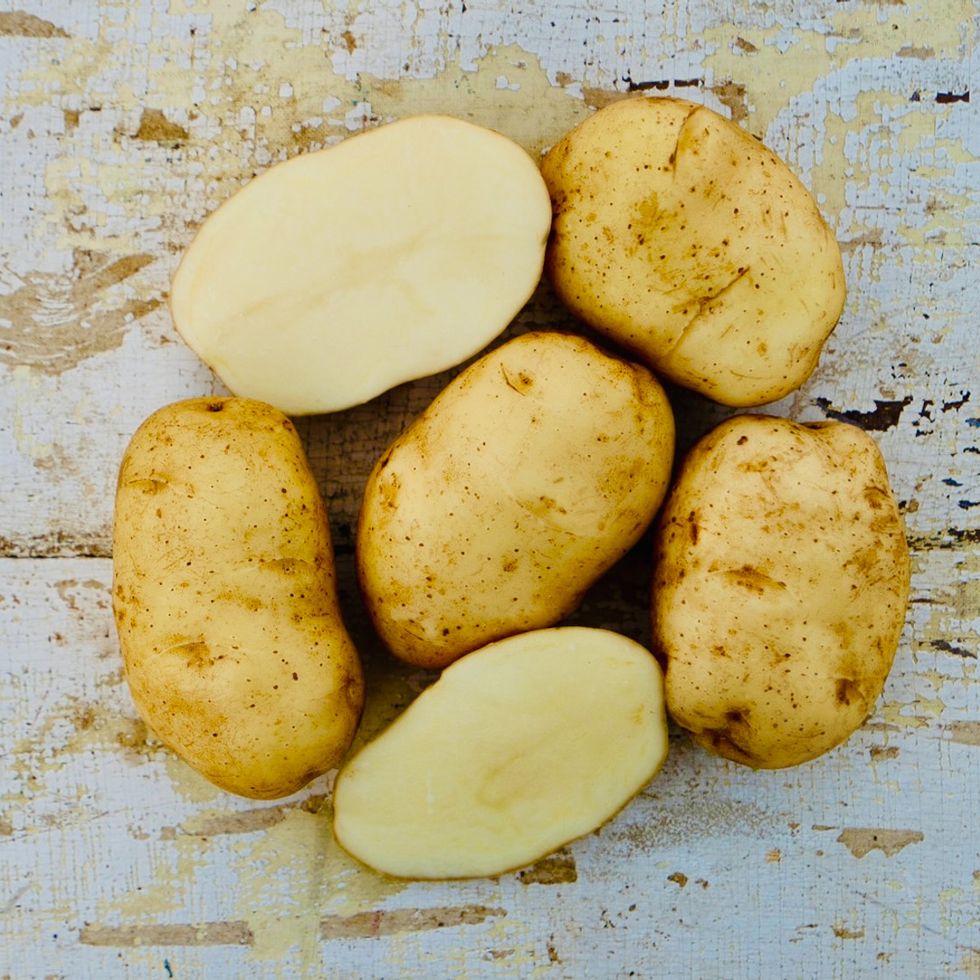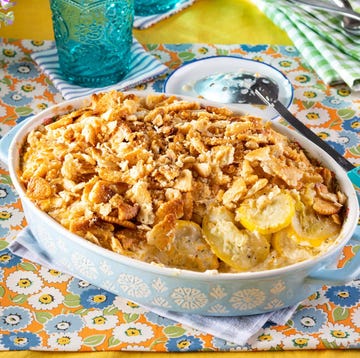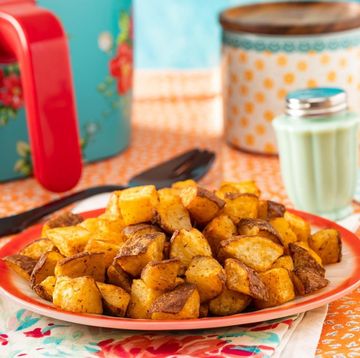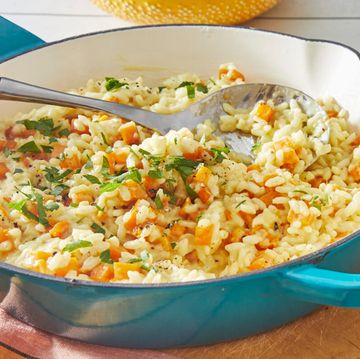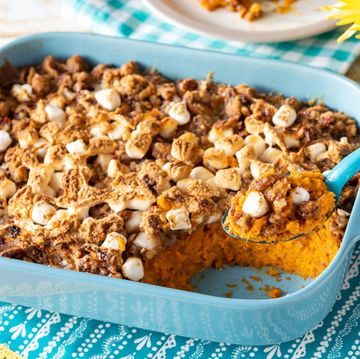Want the best tasting taters ever? Grow ‘em yourself!
If you love making potato recipes as much as we do, then growing your own potatoes is definitely worth it! Especially since it's so easy to do! You can grow them in any setting from a small urban back yard to a large country garden. You even can grow them in containers or bags on a balcony or small deck. "Anyone can learn to grow potatoes," says Angela Ferraro-Fanning, blogger at Axe and Root Homestead and author of The Sustainable Homestead, "They taste about a thousand times better than anything you can buy. Plus, you can grow unique varieties you won’t see at the supermarket."
Wondering how to grow potatoes? Read on for the easy steps, including how to harvest potatoes. Then, try Ree Drummond's crash hot potatoes, roasted garlic mashed potatoes, or red potato salad.
What month do you plant potatoes?
Potatoes are typically planted in mid to late spring, depending on where you live. They can be planted up to four weeks before the last average frost date in your area (check your university county coop service here to help you identify the date). If you plant in late spring, you can expect most potatoes take 90 to 120 days to mature.
How to grow potatoes?
To grow potatoes at home, start with "seed" potatoes, which are not actually seeds (despite the name!). The fully grown potatoes are used for planting and growing even more potatoes. Cut your seed potatoes into one to two-inch chunks, making sure that each piece has at least one eye, or dimpled area. Each piece must have an eye to sprout!
You can put them on a baking sheet and leave them out to “callous over” for 24 hours to develop a harder skin which may help prevent the potato from rotting if the soil is very wet, says Ferraro-Fanning. Or you can simply plant the pieces right away.
Find a spot in your yard that receives full sun, which is at least six hours of direct sunlight per day. If planting in ground, make sure it’s a well-drained area because potatoes don’t like soggy soil. Next, dig a trench about 8 to 10 inches deep, keeping rows about 12 inches apart. Place the pieces in the trench with the eyes facing up. Cover with about 6 inches of soil and ½-inch of straw to keep down weeds and ensure the potatoes aren’t exposed to sun, which can turn them green and inedible.
In about a week or two, you should start to see the sprouts. Cover them with some more dirt and straw. You can do this a couple times. Then, when the plants are about 10 inches tall, push dirt up around the stem to create a hill or mound.
Also, make sure the potatoes get about an inch of water per week. If there’s been no rain, poke your finger in the soil. If it feels about dry about an inch or two down, it’s time to water.
Can I grow potatoes from store-bought potatoes?
Potatoes you purchase at the grocery store usually have been sprayed with growth inhibitors so they will not sprout—although potatoes from an organic farm stand can be planted, says Ferraro-Fanning. However, to find the best quality and largest selection of varieties, it's best to purchase seed potatoes from nurseries. Make sure to chose a type that will grow well in your region of the country; the plant description will specify.
Can you grow potatoes in containers?
Absolutely! Opt for the largest size container you can find, preferably 20-inches in diameter or larger. Fabric bags are another option that many people love because you can place them anywhere, thus increasing your gardening space.
Another possibility is a potato tower which allows you to grow potatoes vertically by layering levels of soil, straw and seed potatoes lasagna-style, says Ferraro-Fanning. Whatever container you decide on, make sure to fill with potting soil, not garden soil or seed-starting soil. Also, make sure the container has drainage holes because potatoes that get soggy tend to rot, says Ferraro-Fanning.
When do I harvest potatoes?
When you see the potatoes flowering, that means there are new, tender potatoes that can be dug up. You can harvest a few from each plant, then re-cover the plants with soil to let the rest of the tubers keep growing. Or you can allow them to mature all the way.
When the plants have yellowed and are dying back, the potatoes are no longer using energy to grow, so it’s harvest time! Push a pitchfork gently in and under to lift up the mound; you don’t want to use a garden spade, which can pierce the spuds. Harvest the potatoes, making a second, wider pass in case any potatoes have wandered out of the trench, says Ferraro-Fanning.
Brush the dirt off your potatoes, but don’t wash them yet. Spread them out on old towels, keeping them out of direct sunlight, for about two weeks. This helps them cure so that the potatoes will store longer; most will last a couple of months in a basket in a cool, dark location. But they’re so good, they probably won’t last that long!
Arricca Elin SanSone has written about health and lifestyle topics for Prevention, Country Living, Woman's Day, and more. She’s passionate about gardening, baking, reading, and spending time with the people and dogs she loves.
